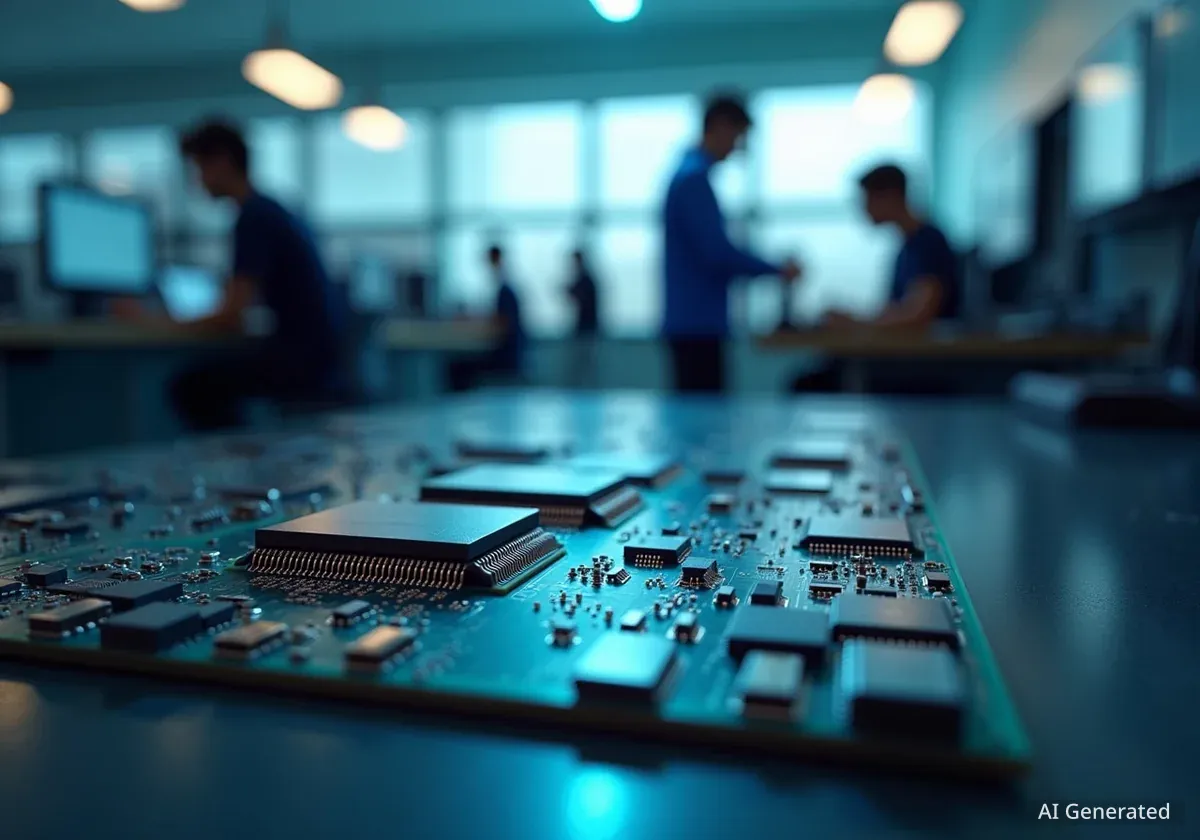Purdue University has officially launched its new Institute for Advanced Semiconductor Manufacturing, a major initiative designed to address the global chip shortage and build a skilled workforce for the industry. The institute aims to become a central hub for research, development, and talent cultivation in the United States.
Key Takeaways
- Purdue University has established a new institute focused on advanced semiconductor manufacturing.
- The initiative aims to train over 10,000 students for the semiconductor industry within the next decade.
- It will feature partnerships with leading technology companies and support from federal programs like the CHIPS and Science Act.
- The curriculum is designed to provide hands-on experience in chip design, fabrication, and packaging.
A Strategic Response to a Global Need
The establishment of the institute comes at a critical time for the global technology sector. Recent years have highlighted the vulnerability of supply chains, particularly for semiconductors, which are essential components in everything from smartphones and vehicles to advanced defense systems.
This initiative is positioned to directly support the goals of the U.S. CHIPS and Science Act, which allocates significant funding to boost domestic research and manufacturing of semiconductors. By creating a pipeline of trained professionals, Purdue aims to reduce reliance on foreign manufacturing and strengthen national security.
The Importance of Domestic Chip Production
For decades, a large portion of advanced semiconductor manufacturing has moved overseas. The COVID-19 pandemic exposed the risks of this concentration, causing widespread production delays for numerous industries. The new institute is part of a broader national strategy to reshore critical technology manufacturing.
Inside the Institute's Curriculum and Facilities
The Institute for Advanced Semiconductor Manufacturing will offer a comprehensive educational program that covers the entire semiconductor lifecycle. Students will engage in a curriculum that balances theoretical knowledge with practical, hands-on training.
State-of-the-Art Learning Environments
A key component of the institute is its investment in cutting-edge facilities. Students will have access to industry-grade cleanrooms, advanced lithography equipment, and sophisticated design software. This environment is intended to simulate the real-world conditions of a modern semiconductor fabrication plant, or 'fab'.
The program will offer specialized tracks for students, including:
- Chip Design and Architecture: Focusing on the foundational design of microchips.
- Materials Science: Exploring new materials to improve chip performance and efficiency.
- Fabrication and Manufacturing Processes: Hands-on training in the complex processes of chip production.
- Advanced Packaging and Testing: Covering the final stages of preparing chips for use in electronic devices.
Ambitious Training Goals
Purdue University has set a target of educating and training 10,000 new semiconductor professionals over the next 10 years. This includes a mix of undergraduate students, graduate researchers, and professionals seeking to upskill through certificate programs.
Forging Industry and Government Partnerships
A central pillar of the institute's strategy is its collaboration with external partners. The university has already established alliances with several leading technology companies and government agencies to ensure its curriculum remains relevant and its graduates are job-ready.
"This is not just an academic exercise; it's a direct partnership with the industry that will build our future," a university official stated during the launch event. "Our students will be working on real-world problems from day one, mentored by experts from our corporate partners."
These partnerships will provide students with valuable internship opportunities, co-op programs, and direct access to industry leaders. Companies, in turn, gain a direct pipeline to a highly skilled talent pool trained on the latest technologies and manufacturing techniques.
Addressing the Workforce Gap
The semiconductor industry faces a significant talent shortage. According to a report by the Semiconductor Industry Association (SIA), the U.S. is projected to face a shortfall of tens of thousands of skilled technicians, computer scientists, and engineers by 2030.
Purdue's institute is designed to directly address this gap. By offering a range of educational options from four-year degrees to specialized certification programs, it aims to attract a diverse group of learners. This includes recent high school graduates, military veterans, and existing workers looking to transition into the high-tech manufacturing sector.
An Interdisciplinary Approach
The institute emphasizes an interdisciplinary model, bringing together faculty and students from various departments. This includes the College of Engineering, the Department of Materials Science, and the Mitchell E. Daniels, Jr. School of Business.
This approach ensures that students not only gain technical skills but also understand the business and supply chain aspects of the semiconductor industry. This holistic education is expected to produce graduates who can become future leaders and innovators in the field.
The Broader Impact on the Region
The launch of the institute is expected to have a significant economic impact on the state of Indiana and the broader Midwest region. By becoming a center for semiconductor excellence, Purdue could attract further investment from tech companies looking to build new manufacturing facilities in the area.
This creates a potential for a new technology hub, often referred to as a 'Silicon Heartland,' generating thousands of high-paying jobs and fostering a local ecosystem of suppliers and service providers. The university's initiative is a foundational piece in building that future.
As the institute begins its first academic year, it represents a major step forward in America's effort to reclaim leadership in the critical field of semiconductor technology. Its success could serve as a model for other universities and states aiming to contribute to this national priority.





